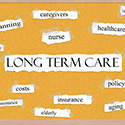
 With minutes remaining in the game, my youth hockey team had just scored, sending the nail-biter state championship into overtime. I was 11 then, and I remember the packed stands full of parents waving signs and pom poms. The other teams were even cheering us on. Only a few minutes into overtime, I watched the puck deflect off our own player's skate into the net, ending the game and our season in agony. Through the tears and heartbreak, I'll never forget what coach said to us, "we didn't play our game." Not the most comforting line after such a loss, but it was 110% true.
With minutes remaining in the game, my youth hockey team had just scored, sending the nail-biter state championship into overtime. I was 11 then, and I remember the packed stands full of parents waving signs and pom poms. The other teams were even cheering us on. Only a few minutes into overtime, I watched the puck deflect off our own player's skate into the net, ending the game and our season in agony. Through the tears and heartbreak, I'll never forget what coach said to us, "we didn't play our game." Not the most comforting line after such a loss, but it was 110% true.

That year, our team had been undefeated until our final opponent took us down. The reason we were so successful was because we had a game plan that worked for us and we stuck to it. It wasn't anything fancy; we just did the simple things really well and were consistent. If we had our backs against the wall or faced adversity during a game, we stayed true to what we knew about winning. But that's not what we did when it mattered most. We let a very good team get into our heads and it caused us to make bad decisions. We didn't stick to the game plan that had provided us with so much success through the season - something that can also easily happen to investors during a market pullback or a time where there is fear and uncertainty.
At the Raymond James national conference in Washington D.C. in May, I listened to a JP Morgan presentation about past, present, and projected market conditions. The most intriguing fact I heard was this:
Since 1980, the average intra-year market decline has been 14.4%. However, 27 out of those 34 years, the market has closed the year positive.
So what does that tell us? To me, it highlights the importance of having a game plan and a strategy and sticking to it. The market will not always move in a straight line up like we have seen over the past few years, so being prepared for bumps along the ride is imperative. As my hockey team experienced, when you begin to deviate from a disciplined strategy, bad things can happen.
Making knee jerk decisions during difficult times can cause you to stray off your path to financial independence. This is when we, your financial planners, step in as coach to talk you through the game plan that we have helped you establish. It is a team effort and working together through the good times and bad is what we do best for our clients.
Nick Defenthaler, CFP® is a Associate Financial Planner at Center for Financial Planning, Inc. Nick currently assists Center planners and clients, and is a contributor to Money Centered and Center Connections.
Past performance may not be indicative of future results. Investing involves risk and you may incur a profit or loss regardless of strategy selected. Keep in mind that individuals cannot invest directly in any index. Any opinions are those of Center for Financial Planning, Inc. and not necessarily those of RJFS or Raymond James. C14-019163

















